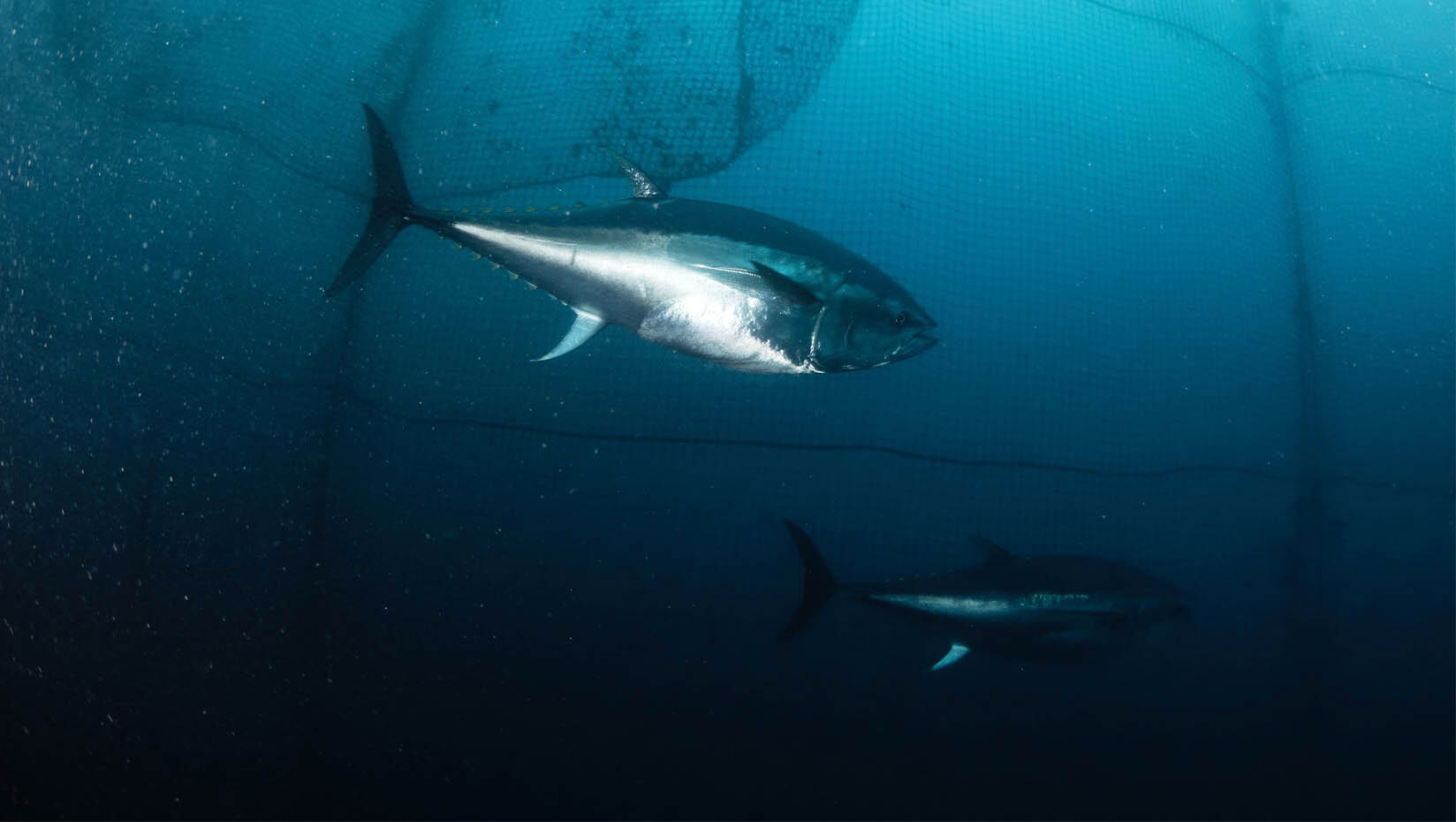
Golet to quantify post-release mortality of giant Atlantic bluefin tuna in New England
Quantifying the number of giant Atlantic bluefin tuna in New England that die after being caught and released is the goal of a new University of Maine-led study.
The U.S. Department of Commerce awarded Walt Golet, a University of Maine assistant professor of marine science, more than $210,800 for the project. For their research on the recreational catch-and-release fishery off the New England coast, Golet and his colleagues will calculate the post-release mortality of western Atlantic bluefin tuna that are larger than 73 inches in length — the minimum commercial length.
When recreational fishermen catch Atlantic bluefin tuna with rod and reel, it’s possible for the fish to experience lethal physical and physiological stress, especially since these fish can stay on the hook for hours at these larger sizes, Golet says. There also have been a growing number of reports observing sharks attacking Atlantic bluefin tuna near vessels while on the line or after they are released.
Interest in Atlantic bluefin tuna has skyrocketed in recent years among recreational fishermen, Golet says, with some vessels exceeding a catch-and-release rate of 10 or more commercial-sized fish per day. Outside of a very small early season quota, recreational fishermen are required to release any Atlantic bluefin tuna they catch that are commercial size, but the fate of these fish is unknown.
Without data, fishery managers cannot accurately determine how many giant Atlantic bluefin tuna are dying from catch and release in their waters, which hampers their ability to evaluate stock status, production and economic loss. By using quantitative data to determine the post-release mortality of tuna, the new study from Golet’s team will provide more insight into the overall mortality rate in the catch and release fishery off New England, which can help managers devise any necessary mitigation measures that maintain the health of the fish and the fishery.
Other researchers involved in the project with Golet include Diego Bernal, a biology professor with the University of Massachusetts Dartmouth; Jeff Kneebone, a research scientist at the New England Aquarium; and Brad McHale, information, reporting and monitoring branch chief of the New England/Mid-Atlantic Division of National Oceanic and Atmospheric Administration’s Office of Sustainable fisheries.
To conduct their research, Golet and his colleagues will ride along on recreational vessels and charter boats and tag every giant Atlantic bluefin tuna the anglers catch. The computerized tags will collect and transmit data for 60 days so the group can determine the fate of each fish. Researchers also will document all catch-and-release conditions, including gear used, hook type and location, fight duration, handling method, general condition of the fish, location and water temperature.
Joe DelloRusso, a new Ph.D. student in Golet’s lab, will combine all of these findings into a longitudinal survival model that will estimate the post-release mortality rates of the tuna captured and determine the factors that most influenced their fate as part of his dissertation.
The results will be shared with the NOAA’s High Migratory Species Management Division, which can devise best practices for catching and releasing giant Atlantic bluefin tuna to share with the fishing industry.
“Estimating post-release mortality and establishing a set of best practices to minimize it will improve our assessment models, more accurately allocate fishing quotas and ultimately benefit the long-term sustainability of the Atlantic bluefin resource,” Golet says. “This benefits stakeholders associated with the Atlantic bluefin tuna fishery and serves to maintain this species’ important role in pelagic ecosystems.”
Golet, who is based out of the Gulf of Maine Research Institute, has helped conserve the western Atlantic bluefin tuna fishery for years by providing regulators updated age, sex, growth and stock composition data. A large component of his research centers around the collection and analysis of biological samples, which are used to improve stock assessments for bluefin tuna and highly migratory species in the Atlantic. His lab routinely samples over 1,200 commercial size Atlantic bluefin fish per season.
In addition to his latest collaborative study, Golet has been working on other projects to help reduce uncertainties in western Atlantic bluefin tuna assessment models and develop best practices for handling and supply. Additionally, he leads the Pelagic Ecosystem Research Consortium to enhance the stock assessment, management and sustainability of tuna, swordfish and sharks — all highly migratory species — in the Atlantic and Gulf of Mexico and runs the Pelagic Fisheries Lab at the UMaine.
Contact: Marcus Wolf, 207.581.3721; marcus.wolf@maine.edu
